100 Years of Doped Tungsten WireⅡ- The Coolidge Process
- Details
- Category: Tungsten Information
- Published on Wednesday, 13 July 2022 19:07
The Coolidge Process
William D. Coolidge (1873-1975), Figure 8, began his career at GE's research laboratory in September 1905. Interestingly, Coolidge's first task was to investigate the cause of the rapid breakage of the filament of the German tantalum lamp when operating under alternating current, most likely due to the limitations of the lamp's cavity technology and the residual gas in the bulb.
At the same time, due to experience with the deformation of amalgamated tungsten, Coolidge experimented with pure tungsten powder and brittle sintered tungsten rods. In 1909 Coolidge and his GE team made a major breakthrough when they succeeded in producing ductile tungsten wires by proper mechanical deformation at high temperatures and corresponding intermediate heat treatments.
In Coolidge's laboratory notebook dated July 16, 1909 can be found: “Swaged tungsten (3/8"’ square) down to 128 mils; then to 78 mils; then to 53.5 mils — then bent it cold”.
In addition, on September 27, 1910 Coolidge recorded an even more inspiring note in his notebooks.
“Reeling tungsten wire, to handle long lengths”.
Today, the ability to handle tungsten filaments with large spool weights (e.g., 4.5 kg to about 18 kg compared to 0.250 to 0.300 kg in the early days) and to wind filaments at extremely high strain rates (up to 40,000 rpm) without breakage has become the backbone of the incandescent lamp industry.
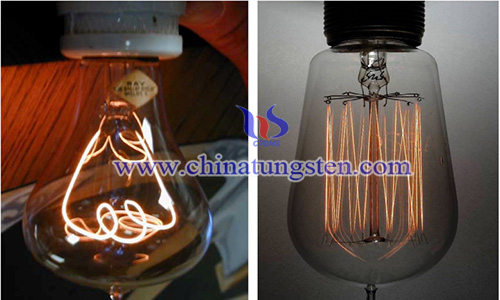
Fig. 6. Centennial carbon light bulb, Fire Department House, Livermore, CA and old fashioned first Mazda Coolidge lamp, 1911 (right)
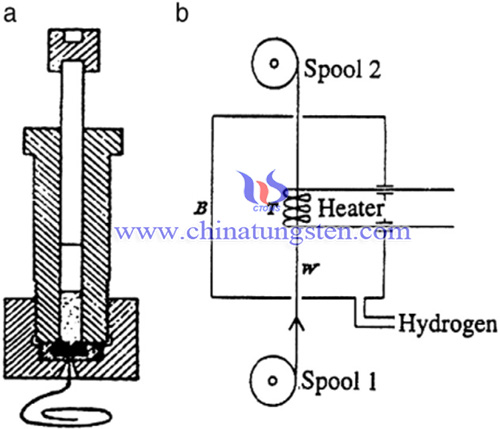
Fig. 7. Squirting process of Just and Hanaman (left), and the gradient anneal according to Pintsch (right)
Coolidge began filing patents in 1909, first on dies and die supports, and later for ductile tungsten on December 30, 1913. Figure 9 shows some drawings of this patent.
Initially, ductilization was considered the most important part of Coolidge's patent, and DE granted licenses to several companies. However, Coolidge's 1913 patent was challenged by the Independent Lamp and Wire Co. of Weehawken, New Jersey. In a 1927 lawsuit in the U.S. District Court in Delaware, Judge Morris ruled that Coolidge's ductile claim was invalid because it was not an invention as defined by patent law.
Table 1. Important metallurgical inventions of the first decades of the 20th century
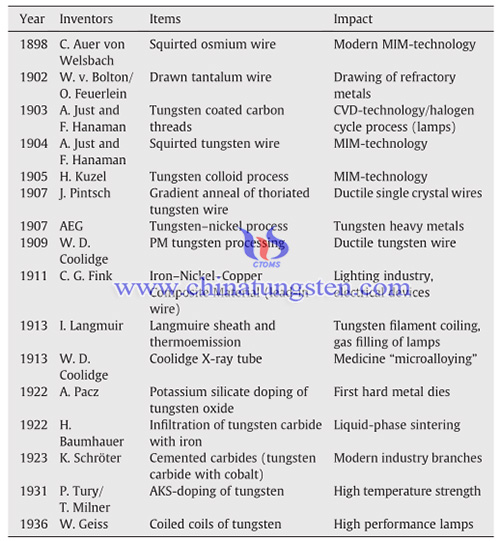
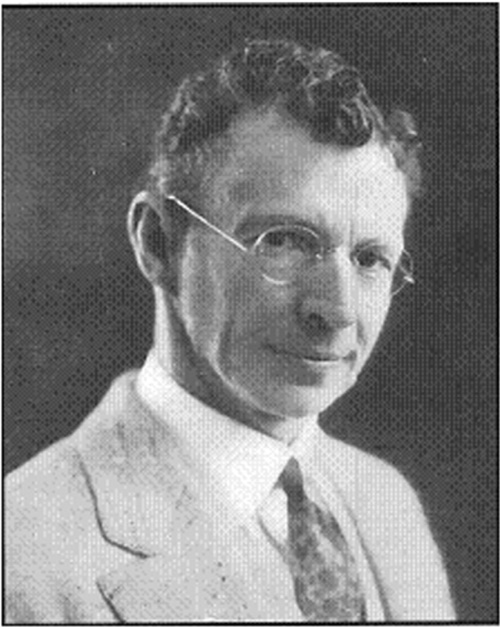
Fig. 8. William D. Coolidge, 1927
In particular, the defendants presented experimental evidence that single-crystal thorium-plated tungsten wires of the Pintsch type that had not undergone the Coolidge process were actually ductile (i.e., drawable) at room temperature, the court adopted the following legal position:
“Ductility is inherent in tungsten. ‘Coolidge tungsten’ is not a new metal; it is a discovery but not a patentable invention. Ductility in tungsten cann’t be produced by any means, no matter how difficult or ingenious: ductility is there all the time.”
Prior to that, the British House of Lords had ruled similarly on the British Coolidge patent. However, the general ruling that the discovery of a property is not a creation and thus not patentable did not diminish the technical significance of the Coolidge process.
Coolidge soon realized that the production of tungsten oxide played an important role in the properties of tungsten wires. He discovered in January 1910 that when tungsten oxide was heated in a special clay Battersea-type crucible, it prolonged the life of the tungsten wire by increasing the strength of the wire to prevent grain-off-setting and sagging. Although Coolidge could not determine the exact nature of the substances to which the tungsten oxide was bound (he speculated alumina and silica), he realized that small amounts of foreign elements had a positive effect on the finished tungsten wire. This was the "birth" of the present-day doping process! Although the reason for this benefit of the crucible was not clear for a long time afterwards, it was not until chemical analysis techniques advanced to the point where parts per million (ppm) could be analyzed with precision that it was understood.
In addition, Coolidge experimented with other refractory materials as additives, as shown in the following quotation from his patent.
“I have succeeded in preventing offsetting in drawn tungsten filaments without using the Battersea crucible process by mixing with the tungsten powder certain refractory materials, such as the oxides of thorium, zirconium, yttrium, erbium, didymium or ytterbium. I have used with especial success thorium nitrate, which gives thoria when decomposed.”
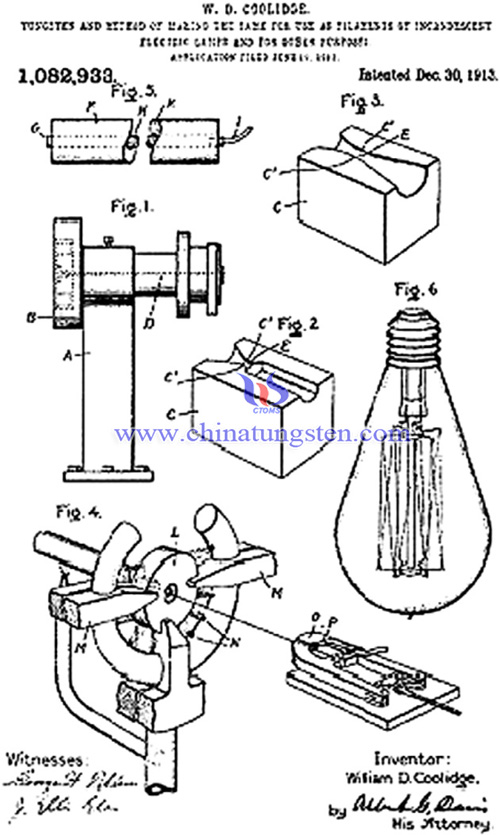
Fig. 9. Drawings of the Coolidge patent, 1913.
The importance of these early discoveries is well demonstrated in modern ODS alloys (oxide dispersion strengthened alloys) as well as in thorium-free tungsten electrodes and rare earth (R.E.) tungsten welding electrodes for gas discharge lamps (discharge lamps).
During a visit to Berlin in 1909, Coolidge showed his first ductile tungsten wire wound on a spool to F. Blau, the technical director of the former Auer-Gesellschaft, then one of the largest producers of tungsten lamps in Germany, which had also been working on the problem of brittle tungsten wires.
“I (Coolidge) remember this circumstance very well because of the excitement and surprise and incredulity which he (Blau) manifested at the time. He asked me over and over again what it was. I told him it was pure tungsten wire, only to have his question repeated again and again.”
The spool was also tested in F. Blau's chemistry lab for some time before it was confirmed that it was indeed tungsten.
Later, in 1910, after a further interview with Coolidge, F. Blau of the German Gasglühlicht AG, which was now producing tungsten lamps under license from GE (cf. Liebhavsky), was quoted as saying
“Now even, after I know the procedure quite exactly, I can say that I have never met with any other substance whose physical properties are so gradually, fundamentally changed by a process of mechanical working as is the case with tungsten.”
The main steps of the Coolidge process are (terms in brackets not originally developed and introduced by Coolidge): selection of precursor material APT (ammonium-paratungstate), respectively, yellow oxide (WO3), [tungstic acid (H2WO4), blue oxide (W20O58) ]–[KS-doping, AKS-doping]–H 2 -reduction to metal powder–[HF washing]–pressing and presintering–direct sintering–[rolling]–swaging–drawing–[coiling]. Schematically, the process is illustrated in Fig. 10.
The special properties of the new tungsten filament, especially its excellent bending ductility, and the fundamental work of I. Langmuir on the convection, conduction and radiation of heat in gases led to the discovery of the "Langmuir sheath" of thermostatic gases surrounding the luminous filament, which initiated the use of inert gases inside the lamp and the development of the adaptation of tungsten coils. The year 1913 marked a further increase in lamp efficiency by filling the tungsten filament with gas.
A few years later, A. Pacz of GE, USA, developed a well-defined doping method in 1917 with the aim of obtaining a sag-free and shift-free tungsten wire corresponding to the specific Battersea quality of Coolidge. It was based on Coolidge's method, but now the new material was tungsten doped with potassium silicate and sodium silicate, a metal Pacz called "218", although its precursor material has been changed to "blue tungsten oxide", which is still used by GE.
The following story tells us that the tungsten wire was produced after the 218th experiment. However, another explanation is that the name "218" comes simply from the serial number of the tungsten acid feedstock used by Pacz in the first production of this new material. Just over 10 years later, P. Tury and T. Millner in 1931 spoke of a third doping element - aluminum introduced in TUNGSRAM, equivalent to the modern AKS doping, the so-called GK-material (gross kristallin), which has a rough microcrystalline structure after recrystallization and annealing. Interestingly, the Hungarian patent was acquired by GE and granted in the USA only after I. Langmuir's visit to Budapest in the 1930s, when Hungarian researchers had already demonstrated the high ductility of GK tungsten wires after high temperature annealing. The resulting higher recrystallization temperature and higher high-temperature creep strength were highly favorable, despite additional problems during the drawing process. Nevertheless, this new material was a prerequisite for the introduction of today's coils by W. Geiss in 1936.
In addition to the first development of the "ductile" tungsten process by Coolidge (1909). There were other important advances, such as the first composite material with gradient properties adapted to the characteristics of light bulb glass, i.e., the introduction of a wire consisting of an iron-nickel core with a copper cladding developed by C.G. Fink's DUMET, which then replaced the platinum wire (1911); the development of the Coolidge X-ray tube (1913); and A. Pacz's doping process (1917).
(Credit: P. Schade “100years of doped tungsten wire”, International Journal of Refractory Metals and Hard Materials, Volume 28, Issue 6, 2010, Pages 648-660, ISSN 0263-4368)
- Tungsten Manufacturer & Supplier, Chinatungsten Online: www.chinatungsten.com
- Tungsten News & Prices of China Tungsten Industry Association: www.ctia.com.cn
- Molybdenum News & Price: news.molybdenum.com.cn
- Tel.: 86 592 5129696; Fax: 86 592 5129797; Email: sales@chinatungsten.com



 sales@chinatungsten.com
sales@chinatungsten.com